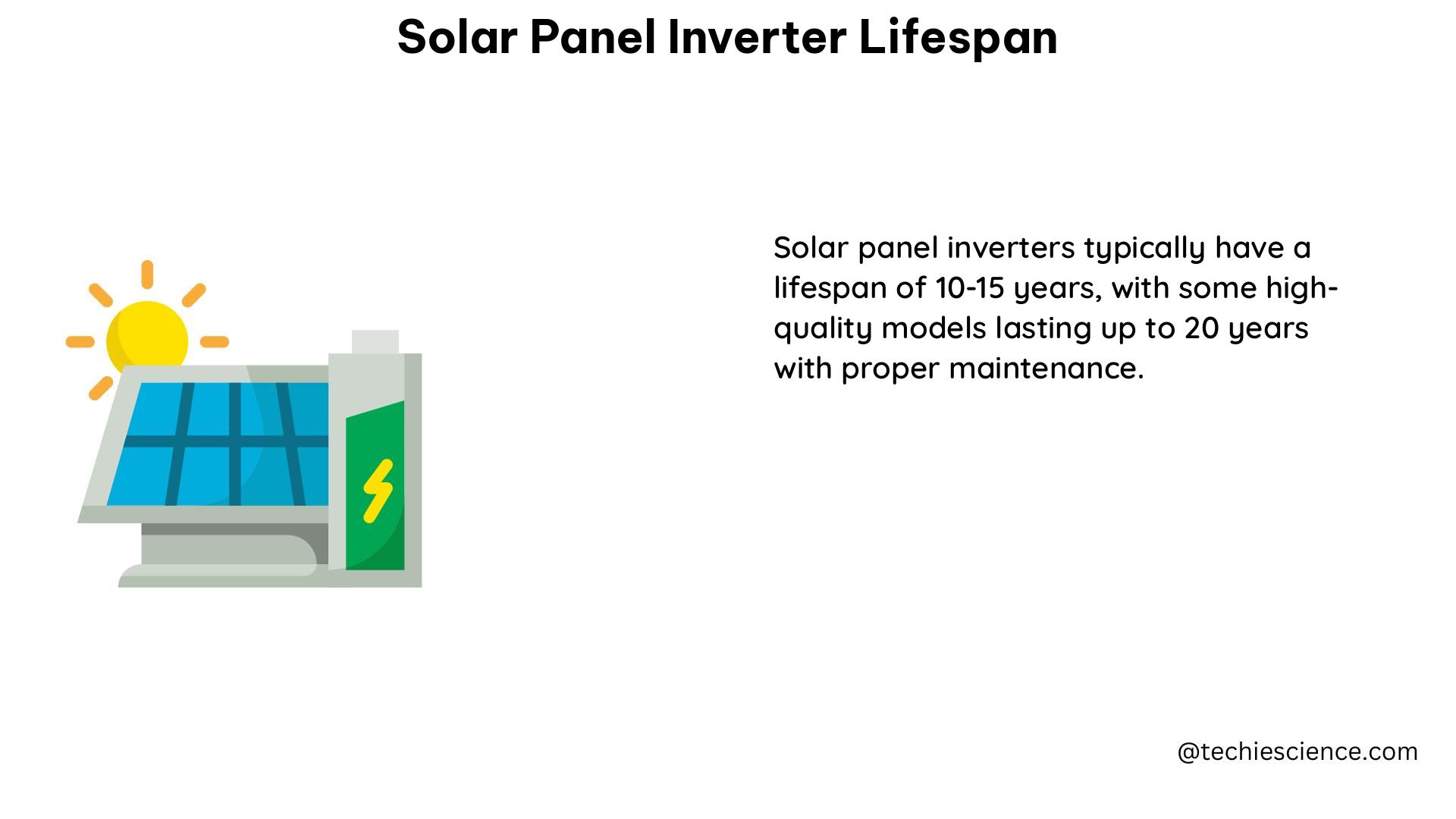The lifespan of a solar panel inverter is a crucial factor to consider when investing in a solar energy system. Unlike solar panels, which can last for 25-30 years, inverters typically have a shorter lifespan due to the rapid aging of their components, particularly the electrolytic capacitors. Understanding the factors that influence an inverter’s lifespan can help solar system owners plan for maintenance and replacement, ensuring their investment continues to provide reliable and efficient power generation.
Understanding the Lifespan of Solar Inverters
Inverter Failure Rates and Lifespan
According to a study by kWh Analytics, 80% of solar array failures occur at the inverter level. The lifespan of solar inverters can vary depending on the specific model and manufacturer, but a common range is between 10-15 years. However, certain types of inverters, such as microinverters, can have a lifespan closer to that of solar panels, with some studies suggesting they can last up to 25 years.
Inverter Degradation Rates
In addition to the physical lifespan of the inverter, it’s important to consider the degradation rate of the inverter’s performance over time. A report by the National Renewable Energy Laboratory found that the degradation rate of inverters is typically on the order of 0.6% to 1% per year. This means that an inverter’s efficiency and power output can decrease by up to 10% over the course of a decade.
Factors Affecting Inverter Lifespan
The lifespan of an inverter can be influenced by several factors, including:
-
Installation Quality: Proper installation, including the selection of an appropriate location and ensuring adequate ventilation, can significantly impact an inverter’s lifespan.
-
Maintenance and Inspection: Regular maintenance, such as cleaning vents and cooling fins, and inspecting for signs of corrosion or damage, can help prolong the inverter’s lifespan.
-
Environmental Conditions: Inverters installed in cool, dry environments with good air circulation tend to have longer lifespans compared to those in hot, humid, or dusty conditions.
-
Inverter Technology: Different inverter technologies, such as string inverters, microinverters, and power optimizers, can have varying lifespans. Newer technologies, like silicon carbide (SiC) and gallium nitride (GaN) components, are designed to improve reliability and longevity.
-
Inverter Capacity and Load: Inverters that operate at or near their maximum capacity for extended periods are more likely to experience accelerated wear and tear, leading to a shorter lifespan.
Inverter Replacement and Upgrade Considerations
When an inverter reaches the end of its lifespan, solar system owners have several options to consider:
-
Replacement: Replacing the inverter with a new, more efficient model can improve the overall performance of the solar system and potentially extend the system’s lifespan.
-
Upgrade: Upgrading to a more advanced inverter technology, such as microinverters or power optimizers, can provide additional benefits, including improved system monitoring, increased energy production, and enhanced safety features.
-
Maintenance and Repair: In some cases, regular maintenance and targeted repairs can help extend the lifespan of an inverter, potentially delaying the need for a full replacement.
Maximizing Inverter Lifespan: Best Practices

To ensure the longest possible lifespan for your solar panel inverter, consider the following best practices:
-
Proper Installation: Work with a qualified solar installer who can properly size and install the inverter, taking into account factors like ventilation, ambient temperature, and shading.
-
Regular Maintenance: Establish a routine maintenance schedule, including cleaning the inverter’s vents and cooling fins, checking for signs of corrosion or damage, and ensuring the inverter is operating within its recommended parameters.
-
Environmental Considerations: Install the inverter in a cool, dry location with good air circulation to minimize the impact of environmental factors on its lifespan.
-
Monitoring and Troubleshooting: Regularly monitor the inverter’s performance and address any issues or anomalies promptly to prevent further degradation.
-
Inverter Upgrades: Consider upgrading to a more advanced inverter technology, such as microinverters or power optimizers, to take advantage of improved reliability and longevity.
By understanding the factors that influence solar panel inverter lifespan and implementing best practices for installation, maintenance, and upgrades, solar system owners can maximize the long-term performance and cost-effectiveness of their renewable energy investment.
References:
- Lifetime Evaluation of Grid-Connected PV Inverters Considering Panel Degradation Rates and Installation Sites: https://www.researchgate.net/publication/314121765_Lifetime_Evaluation_of_Grid-Connected_PV_Inverters_Considering_Panel_Degradation_Rates_and_Installation_Sites
- Understanding Solar Photovoltaic System Performance: https://www.energy.gov/sites/default/files/2022-02/understanding-solar-photo-voltaic-system-performance.pdf
- How long do residential solar inverters last? – PV Magazine: https://www.pv-magazine.com/2021/09/16/how-long-do-residential-solar-inverters-last/
- How Long Do Solar Panels Last? – IGS Energy: https://www.igs.com/energy-resource-center/energy-101/how-long-do-solar-panels-last

The lambdageeks.com Core SME Team is a group of experienced subject matter experts from diverse scientific and technical fields including Physics, Chemistry, Technology,Electronics & Electrical Engineering, Automotive, Mechanical Engineering. Our team collaborates to create high-quality, well-researched articles on a wide range of science and technology topics for the lambdageeks.com website.
All Our Senior SME are having more than 7 Years of experience in the respective fields . They are either Working Industry Professionals or assocaited With different Universities. Refer Our Authors Page to get to know About our Core SMEs.